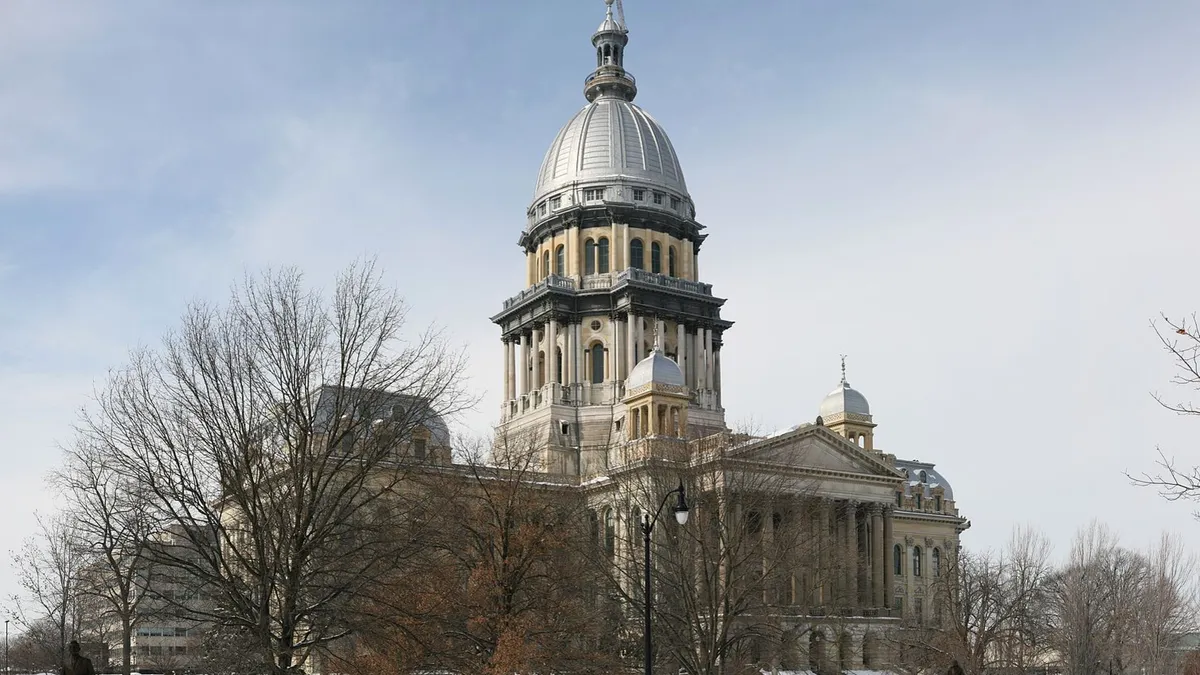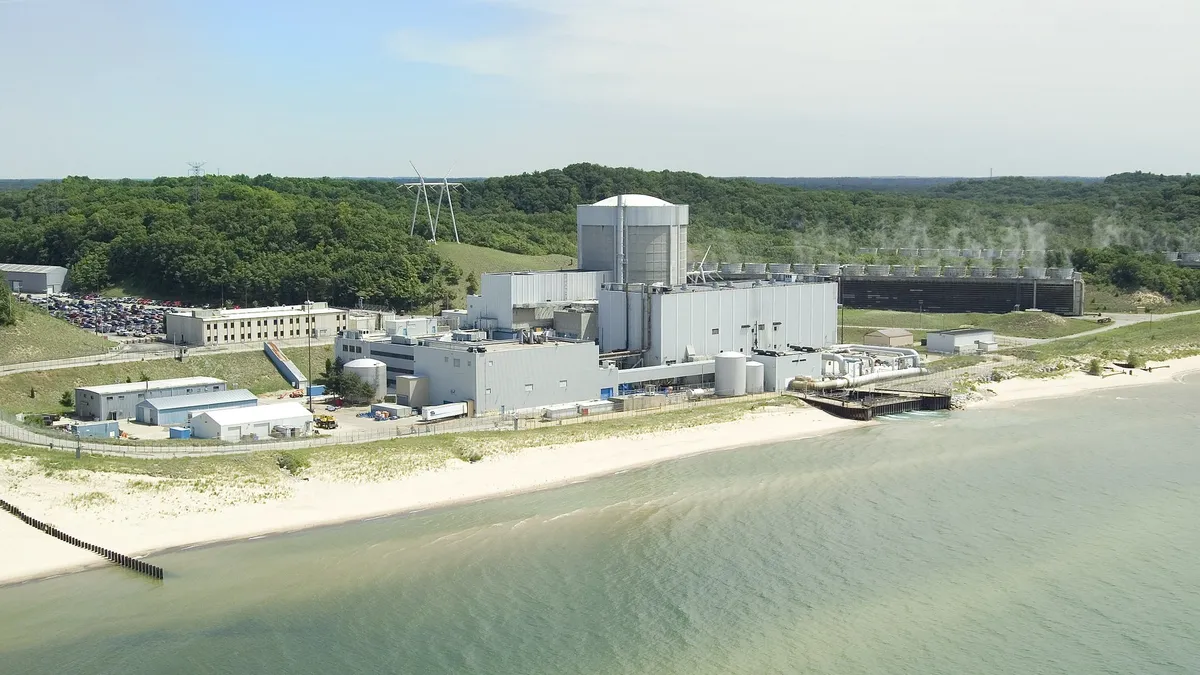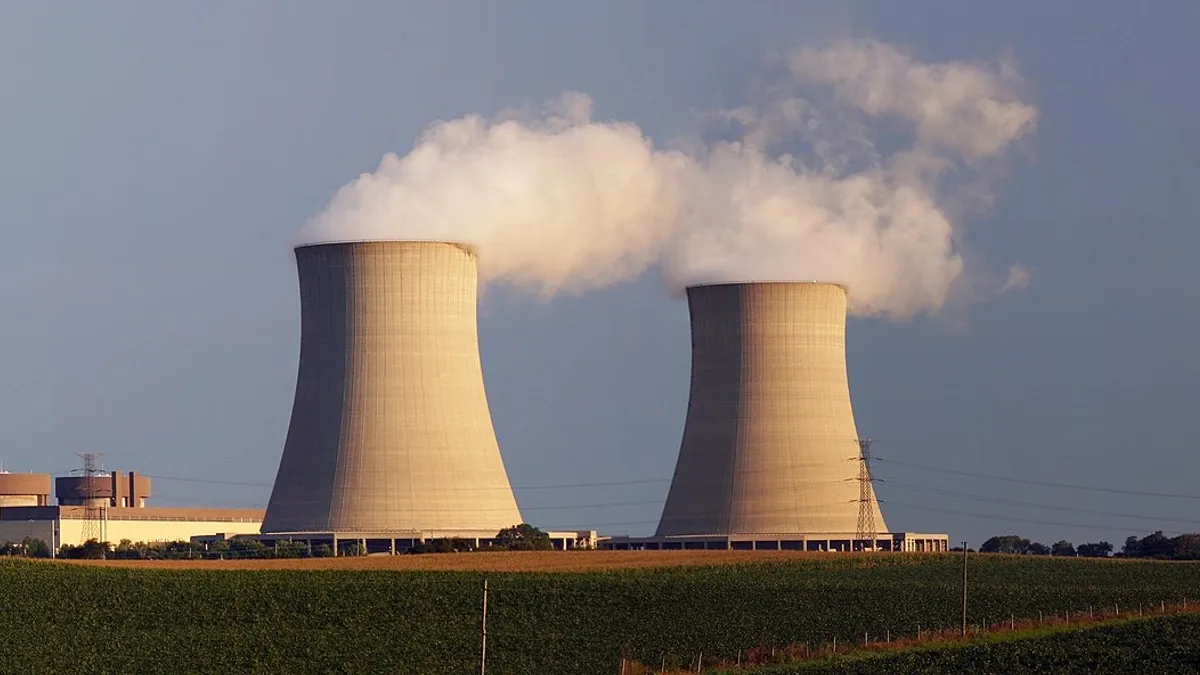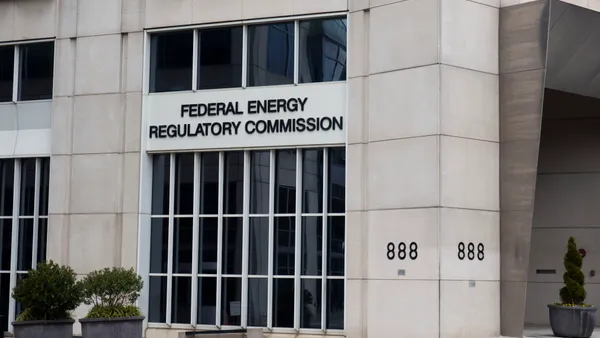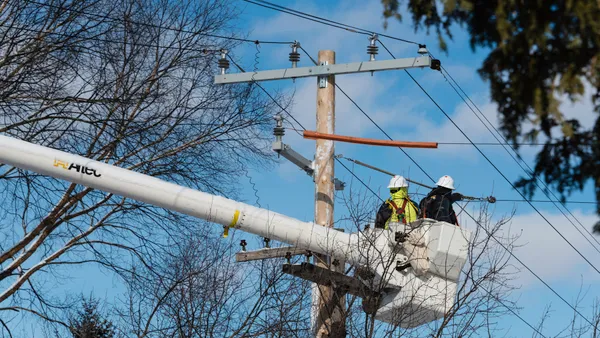The massive energy bill signed by Gov. Bruce Rauner (R) last Wednesday puts Illinois on the map in terms of energy legislation and could serve as a template for other states to follow.
The Future Energy Jobs Bill (SB 2814) covers many sectors of the power industry, from energy efficiency to net metering, but at its heart is the bailout of two nuclear plants, Clinton and Quad Cities.
The law, set to take effect June 1, 2017, establishes a zero emission credit (ZEC) program for the Exelon plants, under which they will receive payments of $235 million a year for 10 years.
Originally the ZEC was structured as a 10-year offtake contract, leaving open the possibility that the contract might be able to be renewed. The original plan also called for the plants to stay open for only six years. The ZEC also has built-in consumer protection measure that reduces the credits, if projected energy and capacity prices rise in the future.
The ZEC is a victory for Exelon, which had planned to shut the nuclear plants in 2017 and 2018 because they were losing money — $800 million over the past seven years — but it came at a cost.
“They had to pay to bail out the nukes,” says Raymond Gifford, managing partner at Wilkinson Barker Knauer in Denver and former chairman of the Colorado Public Utilities Commission. Among the costs was an expansion of utility energy efficiency programs for both Commonwealth Edison and Ameren, a target of environmentalists.
The energy efficiency program sets a 17% demand reduction target for ComEd by 2025 and 21.5% by 2030. For Ameren it is 13% by 2025 and 16% by 2030. The law also raises the cap on spending for the utilities to 4% from 2%.
For ComEd that translates to a $400 million a year cap on spending. If they meet their performance targets, the utilities can essentially put the depreciated value of the energy efficiency assets into ratebase, based on a complex “system of carrots and sticks,” says David Kolata, executive director of the Citizens Utility Board. Given that two-thirds of Illinois electricity bills are on the energy side, it represents a “massive savings” for ratepayers, Kolata says.
The other “costs” include $750 million in low income programs, including $360 million for low income solar programs and job training for foster children and ex-offenders, and a $180 million a year enhancement to the state’s renewable portfolio standard (RPS) program that will grow to $220 million a year.
The RPS money will go to the Illinois Power Agency, which is directed to purchase 1 million solar RECs and 2 million wind RECs. Depending on capacity factors, the agency says 1 million RECs translate into 750 MW to 800 MW of solar capacity and 350 MW to 400 MW of wind capacity.
Final numbers are still being formulated, but the flow of funds into the IPA could result in in the development of 1,300 MW of new wind projects and 3,000 MW of new solar projects by 2030. Half the funds for the solar spend are targeted for distributed energy, including the state’s first community solar program and rooftop solar (about 25% of the solar spend).
In addition to give-backs, Exelon had to drop some provisions in the original bill as lawmakers pushed to pass it in a shortened veto-session.
ComEd, Exelon’s utility subsidiary, had originally hoped to build as many as six microgrids and put them into ratebase. In the Future Energy Jobs Bill that was dropped to five and then to one, and finally to none. The bill had also included a fixed resource adequacy plan (FRAP) that would have provided capacity payments for coal plants in the southern part of the state. That was also dropped in last minute negotiations, resulting in a return of support from several environmental organizations.
Provisions calling for a reduction in retail net metering were also dropped in the 11th-hour negotiations. In the final bill, net metering remains as it was under the current law, which allows payments to customer for both delivery and energy up to a 5% cap. After the cap is reached, the payments are for energy only. The law also decouples volumetric (kWh) usage from revenue.
ComEd and the Citizens Utility Board also initially backed a provision that would have implemented mandatory residential demand charges, and would have been the first to do so by legislation. But after opposition from AARP and the state attorney general’s office, among others, that provision also was dropped.
The whole package came wrapped with a last minute amendment that limits the law’s impact on the average residential customer to less than 25 cents over the 13-year life of the law, as well as a commercial rate cap of 1.3% based on 2015 bills over the term of the law.
The compromises and horse trading won back or won over many supporters, but it didn’t please everyone. The last minute changes won support from the Sierra Club, the Natural Resources Dense Council and the Environmental Defense Fund, among others. But they failed to convince industrial and business groups such as the Illinois Manufacturers Association, the Chemical Industry Council, the Illinois Petroleum Council, or the BEST Coalition, one of the bill’s most vocal critics, which had called the bill “the largest rate hike in U.S. history at $13 billion.”
'Astounding' victory, potential precedent
Exelon had been pushing a legislative bailout for its nuclear plants in various forms for at least two years, most recently in an uphill battle that failed in the previous legislative session. In its final form, the Future Energy Jobs Bill had to be revamped to adjust for the possibility that a zero-emission nuclear plant might not be as valuable under the presidency of Donald Trump. It was negotiated until the last minute of a six-day veto session and passed in the closing hours.
The bill is “astounding” for what Exelon was able to accomplish, says Gifford. In proportion, what Exelon had to give up is “a rounding error” in comparison to the value of the nuclear bailout, he says.
From an investor’s point of view, passage of the Future Energy Jobs Bill is a “broad positive” for Exelon, says UBS analyst Julien Dumoulin-Smith, though the subsidy does not solve “structural market issues.”
In a Dec. 2 note, Dumoulin-Smith cautioned investors about “expectations for broader nuclear fleet issues in future periods, creating a need to support other plants in the state as wind imports and merchant transmission can continue to meaningfully depress” locational marginal prices. He also noted that increased funding for the state’s RPS program would put more pressure on uncompetitive generation throughout the state, such as fossil fuel plants owned by Dynegy and NRG Energy.
Dumoulin-Smith reads the success of Exelon’s ZEC has an emboldening signal for other states. He is cautious on that front but says Connecticut could make a similar move in 2017, for Dominion’s Millstone nuclear plant, and Ohio might float similar legislation in 2017, followed by Pennsylvania and New Jersey in 2018.
“We are hearing rumors that other states in the Northeast and Mid-Atlantic region are beginning to look at similar ZEC legislation,” Timothy Fox, a vice president at Clearview Energy Partners, told Utility Dive.
Fox noted that the Future Energy Jobs Bill was crafted very carefully in order to avoid the legal challenges that scuttled Maryland’s efforts to incentivize in-state generation and led to the landmark Hughes v. Talen Energy Marketing decision by the Supreme Court in April.
The Illinois law was carefully crafted on the basis of the environmental attributes the ZECs would confer on the state while relying on retail sales to fund the program. The intent, says Fox, was to avoid entanglement with wholesale power markets and, therefore, interstate power sales, which is what brought down Maryland’s state generation program. But it is hard not to cross the line between state (retail) and federal (wholesale) jurisdictions when that line is fuzzy.
That boundary might come into sharper focus soon, though, depending on what happens in New York where a group of generators has filed a complaint against the state’s Public Service Commission. As Gifford notes, “the DNA of the Illinois law is the New York Clean Energy Standard. If New York stands, they all stand; if New York falls, they all fall.”
The ZEC is not the only portion of the new law that is at risk. The RPS provisions could also be challenged on the basis of jurisdictional validity of the REC program, said Kolata. A federal court in New York is hearing a case now in which Allco Renewable Energy argues that a Connecticut REC program violates the dormant commerce clause of the Constitution. A ruling by the Second Circuit Court of Appeals in that case could factor into the fate of the Illinois program.
Nonetheless, the Future Energy Jobs Bill is a landmark piece of state energy legislation. “It gets us half way to the utility of the future,” Kolata said. The other half has to do with issues involving behind-the-meter distributed energy resources. The debates about the real value of solar are going to start to come to the forefront when Illinois draws near the 5% cap on net metering, he says.
As those debates continue, and utilities and regulators in states such as New York and Ohio continue to move toward a definition of the utility of the future the utility, the Future Energy Jobs Bill could serve as one model to follow. But the irony, as some critics have pointed out, is that the law has embedded a utility in the process as a gatekeeper.


